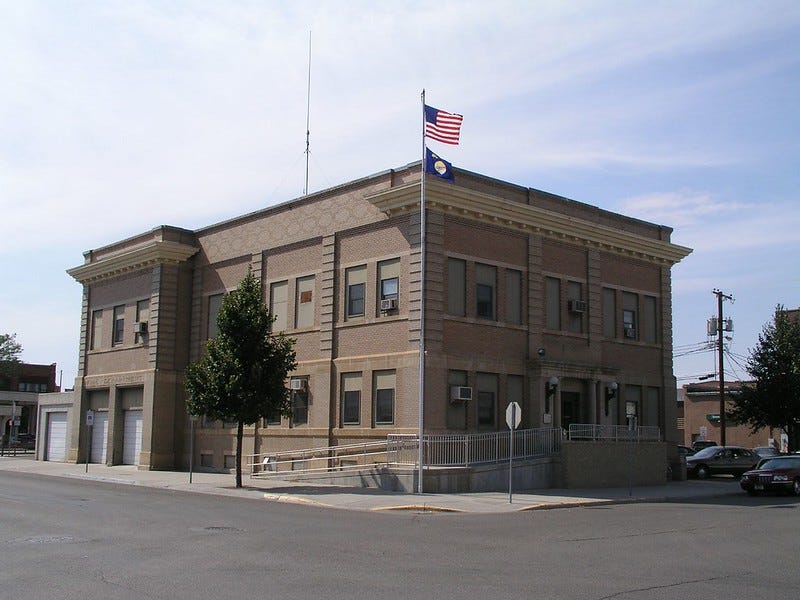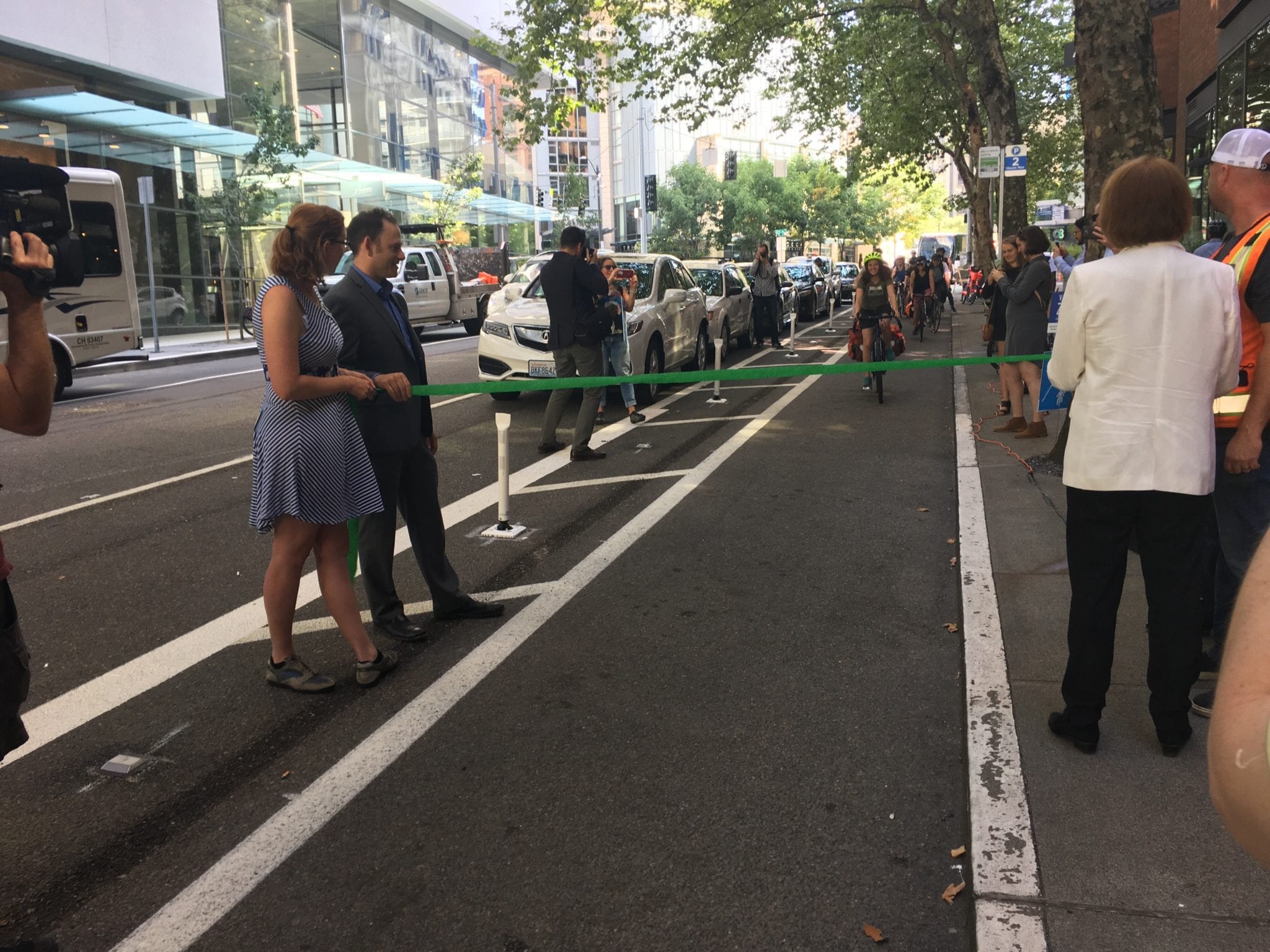Editor's note: A version of this article originally appeared on Carter Lavin's Substack and is republished with permission.
If you work for a transit agency, a department of transportation, or an outside engineering firm, you probably care about helping people get to where they need to go easily, affordably, safely, and in an environmentally-friendly way. Let’s say you’ve spent months or maybe years working on the technical details of a great transit or bike project that will make your community a better place. Your dreams are getting closer to reality and your project is about to go to its first major public hearing….but how are you feeling about that public hearing?

Are you seeing flashes of the show “Parks & Recreation” or thinking about the rise in threats and violence against staff at all levels of government across the US? Maybe you’re feeling confident because your project is so great that it’ll speak for itself and be beloved by all — in which case you might be in for a rude awakening. (Or maybe you’re right, in which case, congrats!)
The public input process can be a painful one for staff working on a project. Projects going through that ringer can either be stopped cold by opposition or distorted beyond all recognition. Staff working on a project that undergoes that process can become deeply frustrated and/or learn to develop a “professional” dispassionate disconnection from their project. That “professional detachment” can be a self-protection mechanism that minimizes disappointment and frustration when your transit, bike or pedestrian safety project gets sacrificed on the altar of parking and driver comfort.
It can be extremely painful to spend years on a project that you know will objectively make your community better, only to have a handful of objectors kill it. Emotionally detaching from that outcome can feel like the only way to keep yourself in a headspace to go to work the next day. It can be tempting to say “oh well, the community didn’t want it, and I’m here to serve the community,” and try to shrug it off. Because what else can you do?
Of course, some level of dispassionate disconnect from specific outcomes can be helpful for anyone, but too much of it leads to a snuffing out of your inner passion which brought you into your transportation career in the first place. On a larger scale, the numbing out lets your projects drift towards supporting the deadly, climate disrupting status quo.
But in a car-dominated world, you can't just go with the flow and change your projects to satisfy the loudest, most reactionary voices or else you will just end up making something that further entrenches car supremacy and the emissions & traffic violence that goes with it.
If you want to win your project, you need to fight for it. As agency staff or an outside consultant, your hands might be officially tied…but you can still kick. Here are some examples of ways you can help tip the balance towards your project while remaining “neutral and unbiased”:
- Understand that neutrality is a myth and acting “neutral” is a bias towards the status quo. In this case that means tending towards inaction and car-centrism with the traffic violence, carbon emissions, and unfriendly streets that goes with it. Understanding that there is no “view from nowhere” and that everything has some sort of bias helps you get comfortable with accepting what your biases actually are, and it makes it easier for you to work with that knowledge.
- Frame the conversation how you want to frame it. For example, when creating a feedback form for residents about a street improvement, it is just as “neutral” to say “the current road design results in X to Y injuries and fatalities per year and to prevent them we are changing the road. Which of the new potential road designs do you prefer?” and not include a “no build” option. Or, if you have a “no build” option, you can include language saying “a no build option will likely result in X to Y injuries and fatalities per year.” Inaction comes at a high cost – include the cost of inaction in your work.
- Expand your circle of friends. It’s perfectly fine to get a coffee or go for a walk with an advocate who cares about the stuff you are working on and wants the same things you do from your project. It’s not OK to accept a luxury vacation from an advocate, but you can get a cup of coffee and chat.
- All community input processes are biased toward people who have the privilege & ability to respond – ask yourself how will you correct for that bias. There are huge swaths of your community that, for a variety of reasons, cannot speak out at some hearing or file an online public comment. The information and feedback you get is extremely biased against them. How will you correct that bias?
These are just the tip of the iceberg and there are a host of other ways you can take action from the inside. Some require a more delicate touch than others, and you might feel more comfortable with some of them, but it is important to recognize that you have tons of tools at your disposal. The scales are always being tipped one way or another and loads of people try to put their fingers on the scale. And even if you want to “remain neutral” as staff or a consultant, understand that this attitude just empowers the status quo. You are allowed to want your project to go through and make people’s lives better, you can help make that happen.
Carter Lavin is a climate activist in Oakland, California who helps organizations and individuals build political power, hone strategy, and win campaigns on the local, regional, and state level. Learn more about him at his website, or schedule a time to speak with him at carter@carterlavin.com.
To learn more about organizing, Carter is also hosting the following free group trainings and virtual events:
-8/16 @ 6:00pm PT — “What would it take to complete the California High-Speed Rail in 5 years?” Learn more and register here.
-8/22 @ 5:30pm PT — Free Transportation Advocacy Training: “How to Build a Coalition and Win Bigger.” Learn more and register here.
-8/23 @ 5:30pm PT— Join your fellow transportation advocates at the August Open Discussion Zoom Happy Hour! This month’s topic: "Getting Decision Makers literally on the bus, train, and bike. What works, what doesn't and why to do it." Come share your thoughts and learn from allies. Register here.
-8/30 @ 5:30pm PT— Free Bike Activism Training: “How to Overcome the Opposition and Win a Bike Lane.” Learn more and register here.






